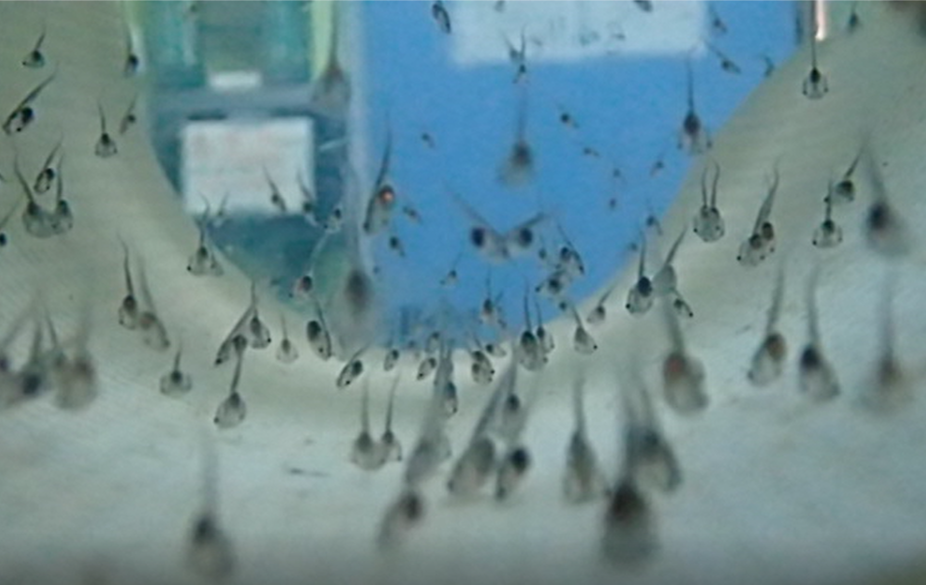The African clawed frog, a species native to southern Africa, is one of the most successful invaders in the world. Part of the reason is that it has been of particular interest to scientists for a long time.
This frog has had a long history in science since its original description in 1802. It is an atypical frog, with claws on its toes, and spends most of its time in water – unlike other frogs. This fascinated many researchers. They also realised these frogs are easy to maintain in captivity, and even breed under these conditions. So they were useful for dissection in science education and a model organism in physiology research.
Lancelot Hogben, a British biologist who visited Cape Town in 1927, found that this frog was extensively used in South African physiology departments. He discovered that female African clawed frogs can be used as a pregnancy test by injecting a woman’s urine into the frog. The gonadotrophin hormones in the urine of a pregnant woman would induce ovulation in the female frog, which would then lay eggs – a positive pregnancy test. This test was widely accepted and used globally less than 100 years ago.
Thousands of live frogs were exported around the world to use in laboratories, as dissection animals and for pregnancy testing. More recently they have been widely exported as pets too.
Unfortunately, this frog did not stay in captivity. It has been deliberately and accidentally released into the wild in places where it’s not a native species.
Wild populations of the African clawed frog have been discovered in the US, the UK, Europe and southern America. Not only have these populations been established, they have overcome dispersal barriers in their new environments and started to invade.
These frogs can move overland between ponds and rivers for several kilometres. Adults can eat a range of prey items. They compete with native amphibians and prey on them. They are also very adaptable in the new environment. For example, invasive tadpoles of the African clawed frog can recognise and respond to novel predators. This adaptability and competitive ability seems to be contributing to their invasion success.
Read more: Invasive tadpoles can recognise potential predators in new environments
Understanding the traits which appear to favour or limit the species’ invasion potential can guide measures to control and eradicate it. One aspect that biologists don’t know much about yet is the impact of tadpoles on the invasion potential.
We therefore set out to address this gap in our knowledge. We studied a population in western France and made an unexpected finding. Rapid adaptations in adult frogs were not reducing the survival success of tadpoles. This suggests that not just adult frogs but tadpoles should be targets for control as they can influence the invasion potential of this population.
The invasive population in western France
The introduction history of this population in the Deux-Sèvres department is well studied. African clawed frogs were released from a breeding facility near the town of Saumur when it closed down in the 1980s. The population has since then spread to cover an area of about 4,500km².
Previous studies have found that the adults at the introduction point differ from adults found at the expanding population edge. Adults at the periphery were found to have longer hind limbs in relation to their bodies. This may improve their swimming performance and endurance. And the relative mass of their reproductive organs is smaller. These differences – which have evolved in just 40 years – suggest that they are allocating fewer resources to reproduction and more to dispersal.
But little is known about how adaptations in adults affect other life stages such as tadpoles and whether other life stages may limit their dispersal capacity at the edge.
In some frog species, tadpole and adult traits can be coupled. Carryover effects from the development of tadpoles can influence adult size and reproduction, for instance. Trade-offs in resources in adults can affect egg size, clutch size and ultimately tadpole development. The hypothesis was therefore that the African clawed tadpoles in France might be influenced by adaptations in adults and that the tadpole populations at the periphery might be more vulnerable than those at the core.
We studied this by comparing traits of tadpoles from the core and the periphery of the population. These traits included the body size of the tadpoles, the time they took to reach metamorphosis and their survival rate. For instance, it’s known that a shorter tadpole period usually decreases hind limb length. So we expected to find that tadpoles at the periphery would have a longer tadpole period than those at the core. That longer period might expose the tadpoles to unfamiliar threats at the population periphery. Identifying vulnerable points in the species’ life cycle might provide an opportunity for control and eradication.
But what we found was not what we’d predicted. Tadpoles at the core did not differ from tadpoles at the periphery in terms of size, time to metamorphosis and survival. This indicates that adaptations in adults do not affect tadpole stages. The traits are not coupled.
The changes in adults that allow them to disperse better don’t seem to have a negative effect on tadpoles at the periphery. The tadpoles can function and survive as normal, while adults are changing to increase their dispersal rate. Also, tadpole development does not seem to constrain adult traits. This may ultimately increase the invasion potential of these frogs in this area.
The rapid adaptation in adults at the periphery and the decoupling of traits between life stages presents a challenge to the control of this invader in France. Current strategies mainly focus on the removal of adults. Our study highlights that other life stages such as tadpoles should be targets for control or eradication too as they can affect the invasion potential of this population.

